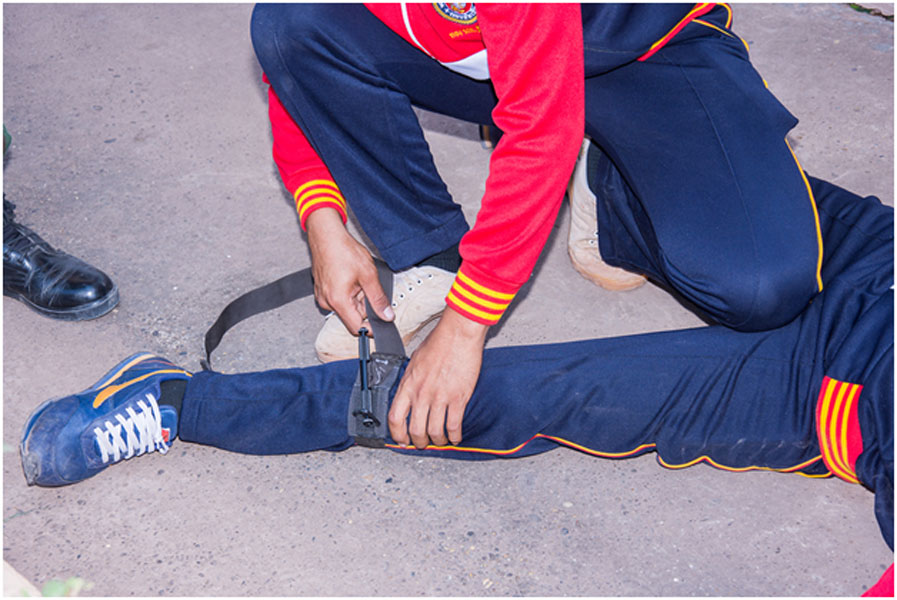When seconds count will you be prepared to help a victim who is bleeding profusely? Even if emergency responders are on the way, it is important to stop the bleeding during these critical minutes. It is a matter of life and death since a person can die from blood loss within five minutes.
Fortunately there are steps that you can take to help keep an injured person alive until the emergency responders arrive. The Stop the Bleed campaign (bleedingcontrol.org) was launched in 2013 by the Hartford Consensus, a collaborative effort of federal law enforcement, trauma surgeons and emergency responders, to increase the chances of survival for victims of motor vehicle accidents, gunshots, and mass-casualty events such as the Sandy Hook Elementary shooting in Connecticut or the Boston Marathon bombings. The leading cause of death in these mass-casualty incidences was uncontrolled bleeding. In fact uncontrolled bleeding is the number one cause of preventable death from all incidences of trauma, according to the Hartford Consensus group.
Simple steps to ensure your own safety and save a life
The South Carolina State Legislature recently approved funds to help train school personnel and provide trauma first aid kits, in the event of an active shooter or mass casualty event. The training involves three simple steps to remember when trying to save a life in a bleeding emergency. Before offering care, remember to assess the situation and move yourself and the injured person to safety if necessary. The Stop the Bleed campaign recommends these three ABCs:
- A is for alert. Alert emergency medical personnel by calling 911.
- B is for bleeding. Find the source of the bleeding and cut the clothing over the wound so you can clearly see it. Assess any “life threatening” bleeding. Things to look for are blood spurting out of the wound or pooling on the ground, wounds that continue to bleed, clothing or bandages that are soaked with blood, or a bleeding victim who is now confused or unconscious.
- C is for compressing a bleeding blood vessel to stop the bleeding. Cover the wound with a clean cloth and apply firm, steady pressure to the bleeding site with both hands. If the bleeding from an arm or leg does not stop apply a tourniquet 2-3 inches closer to the torso from the bleeding site. If the bleeding still doesn’t stop put a second tourniquet even closer to the torso from the first tourniquet. If no tourniquet is available continue to apply hand pressure and pack the wound with gauze to stop bleeding until help arrives.
“What Everyone Should Know to Stop Bleeding After an Injury,” the Hartford Consensus 2016 (bleedingcontrol.org)
Medtrust Transport provides emergent and non-emergent ambulance services in Charleston, Myrtle Beach and Georgetown, South Carolina. We have trained EMT personnel and a fleet of fully-equipped ambulances. We aim to provide compassionate and timely patient care.

